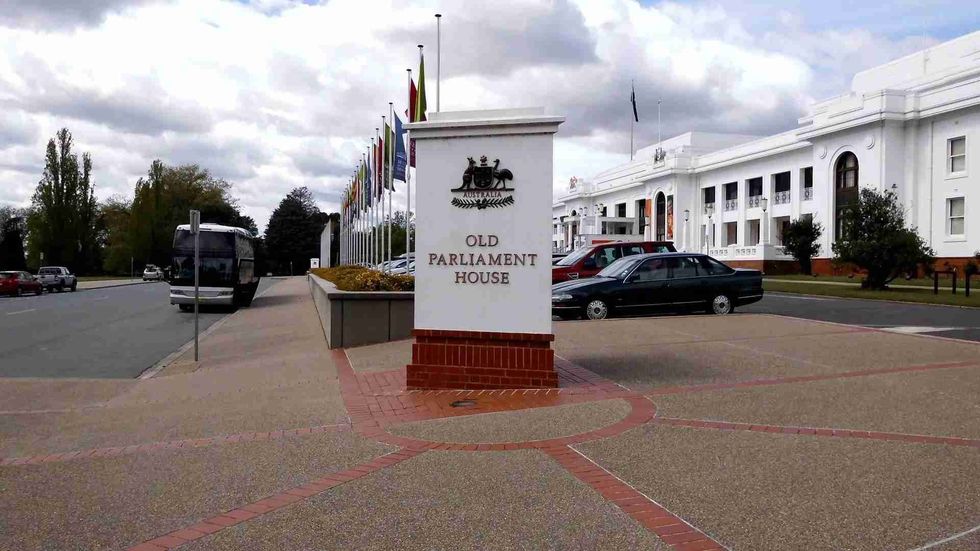191 Australian Government Facts: Election, Hierarchy And Other Trivia
What images flash through your mind by hearing the name of Australia? Is it down under? Is it how the English language finds funny ways of expression there?
Is the world's largest island more than just wallabies, emus, and Uluru? There are kangaroos as well as koalas! Aside from that, Australia is well-known for the diverse species of plants and animals that it hosts.
Because of the strategic position it occupies on the map, the ecosystem found here differs greatly from that in other parts of the world. Australia has over 24,000 native plant species on the continent.
Queen Elizabeth II of the United Kingdom also enjoys the title of being called the Queen of Australia. A significant tourist attraction of the Great Barrier Reef is the largest in the world collection of individual coral reefs amounting to 2,900.
It is the most sparsely populated continent, with a vast majority of the population choosing to live near the coast. In Australia, voting is obligatory. Mainland Australia has 22,292 mi (35,877 km) of coastline and amazing beaches amounting to as many as 10,000, the most popular of which is Bondi Beach close to Sydney and Cable Beach around Broome.
If you like our article on Australian government facts, you might also like to read about American government facts and Bahamas government facts.
Fun Facts About The Australian Government
Australia was instituted on January 1, 1901, by bringing together six British colonies of New South Wales, South Australia, Western Australia, Victoria, Queensland, and Tasmania. At that time, the colonies became states.
(The Australian Capital Territory along with the Northern Territory were included afterward.) The formal name of the nation is the Commonwealth of Australia. Did you know that the government runs its meetings not only in the capital city of Canberra but also in other major regional cities?
Australia has a federal political structure. Australia is run by an elected government. Power is divided among three levels of government in the federal system: state governments or territory governments, federal and local. The federal government is the highest administration level, and it refers to the entire country.
The federal parliament is divided into two compartments: the Senate (upper house) and the House of Representatives (lower house). The House of Representatives hosts 151 members; each member represents an electoral district of approximately 165,000 people.
The Senate has 76 members, with 12 from each of Australia's six states and two from each of the country's internal territories, the Australian Capital Territory and the Northern Territory.
The governor-general is a representative of the Australian monarch. The Australian system of government's executive capacity is formed by the party or coalition that has a majority in the House of Representatives. The prime minister is the parliamentary leader who supports a majority of House of Representatives members. The governor-general formally appoints the prime minister to the position.
The executive powers are vested in the Queen, according to the Constitution, and are exercised by the Governor-General as the Queen's representative. However, the Constitution alone cannot provide a realistic understanding of Australia's Executive Council, and a literal reading of the Constitution can be misleading.
The federal government's decisions are adjudged in the federal parliament, which is constituted by the two houses, namely the House of Representatives and the Senate. The prime minister is the federal government leader.
In reality, the prime minister and cabinet wield executive power (senior ministers). Their power is emanated constitutionally because of their association with the federal Executive Council and, politically, they take the role as advisors to the Governor-General.
The prime minister is the government's leader, and the prime minister obtains this status by being the elected leader of the ruling party.
The cabinet spearheaded by the prime minister in the forefront of the top ministers is the government's primary policy-making body. The cabinet makes major policy and legislative initiatives, and the prime minister appoints ministers to seats in the cabinet.
The present legislation allows for up to 30 ministers. About 20 senior ministers oversee the key departments and are generally cabinet members.
Other ministers are in charge of certain administration areas within a large department or of a minor department. Both houses of parliament appoint ministers.
However, the majority (about two-thirds) are House of Representatives members. The High Court of Australia and its subordinate federal courts that define the concept of separation of powers states that the three branches of government carry out their functions primarily independently of one another.
On behalf of the Queen, the Governor-General exercises the ceremonial powers of the head of state. While the Governor-General exercises executive power or acts in the Governor's name, the Governor-General is vested with the following powers under the Australian Constitution:
-appoints and removes members of Executive Council
-appoints and removes ministers who are in charge of the administration of the Australian system of government departments and agencies.
-selects judges (the dismissal of judges can only be initiated by the Australian parliament)
-is the supreme in command of the armed forces who chooses when parliament meets (subject to specific constitutional powers) and has the authority to prorogue (suspend) or dissolve parliament.
issues writs for the general election, launches government spending by recommending appropriations to parliament, turns proposed laws to acts of Australian parliament by assenting to legislation enacted by both houses, and may obstruct or propose revisions to any law passed by both houses.
Different Levels In The Australian Government
Australia is a representative government, which requires all Australians above the age of 18 to enrol and vote for somebody who represents them. The Australian government is divided into three tiers.
If a minister wishes to enact new legislation or amend an existing one, he or she must first obtain the consent of the federal executive. The minister then collaborates with the appropriate government department to draft the bill and propose the law before it is debated in parliament.
The federal government or federal parliament consists of two houses, the House of Representatives and the Senate, and is the federal government's unit involved in making important decisions for the government.
People elected to Australia's House of Representatives represent a distinct division or electorate. The prime minister is the federal government's leader who has been elected as the party's leader with the most members elected to the House of Representatives (by their fellow party members).
The Australian law invites citizens to vote 'yes' or 'no' on the country's formation. (A referendum is a yes or no vote on a specific topic). The colonies surrendered some of their authority to a new level of government known as the commonwealth government after a majority voted 'yes.'
The Senate, sometimes known as the state's house or the 'house of review,' collaborates with the House of Representatives in examining, debating, and voting on new legislation. Senators are representatives elected to the Senate. They represent an entire state or territory; each state has 12 senators, and each territory has two senators.
Foreign affairs, social security, labor relations, commerce, immigration, currency, and defense are all duties of the federal government. Isn't it fascinating to learn how the different units of the government come together to make a country run?
Most of the commonwealth government has two Houses of Parliament, but Queensland and the Northern Territory have a single house similar to the House of Representatives. The state and territory legislatures operate similarly to the commonwealth parliament, and they make laws for their state or territory, and the commonwealth parliament makes laws for the commonwealth.
The state parliament, which meets at the state's parliament house, is the decision-making body of the government. Except for the Queensland parliament, each state legislature has two chambers.
Representatives elected to state legislatures are commonly referred to as members: Members of the Legislative Assembly (MLA), Members of the Legislative Council (MLC), and Members of the House of Assembly (MHA).
The premier is the name given to the leader of a state government. The federal legislature consists of a House of Representatives of 147 members elected on a preferential voting system to represent individual electorates in all states and territories.
A Senate of 12 representatives from each state government and two from each territory is elected on a proportional representation system.
The setup in the Northern Territory and the Australian Capital Territory is different. The Legislative Assembly is the name given to each territory's parliament, and the chief minister is the leader of each territory's government.
Justice, consumer affairs, health, education, forestry, public transportation, and key highways are all responsibilities of state and territory governments.
The local government body is commonly referred to as the city Executive Council or shire council. State governments create councils to address the specific requirements of a city or local community. Council members or councilors are the representatives who make up the Executive Council, and the mayor or shire president presides over the Council.
The local government is responsible for road maintenance, rubbish collection, construction rules and land subdivisions, public health, and recreation facilities such as swimming pools.
In general, the local council cares about public property in the community, such as local roads and parks, and chooses where new local roads and structures should go and which natural areas and historical places should be safeguarded. The council must authorize all new construction designs.
Facts About Different Political Parties In Australia
The presence of political parties underpins Australia's governance structure. Although the house members are elected to represent the people of a particular electoral district, most of them vouch for their ideologies of a particular party.
The national government is instituted by the party (or alliance of parties) that backs the maximum members of the house. The official opposition is formed by the party (or the alliance of parties) with a greater number coming from the members who could not form the government.
Each legislative party elects its leader; the executive head of the government goes on to become the prime minister and the chief of the opposition becomes the leader of the opposition.
The Australian Labor Party, the Liberal Party of Australia, and the Nationals are the three major parties present in the House of Representatives. The Labor Party is known to be Australia's oldest political party, formed on a federal level in 1901.
The current Liberal Party was established in 1944. The year 1920 saw the onset of the Country Party; in 1975 it was christened as the National Country Party, and since 2003 it's been known as the Nationals.
The Liberal Party and the Nationals from Queensland joined hands in 2008 to establish the Queensland Liberal National Party. Liberal National Party members who have been chosen to the federal parliament, on the other hand, have continued to be called Liberals or Nationals.
Since the 1949 general election, the two prominent parties that took the reigns of the government have been the Nationals and the Liberal Party.

Election Procedure In Australia
Australia is a representative democracy, which means that Australians vote for members of parliament to establish laws and make decisions on their behalf. Enrolment on the electoral roll is mandatory for all Australian citizens aged 18 and above, and it is also required to vote in person on election day or by mail.
Australians elect members of parliament to represent their views and interests in the Senate and House of Representatives in federal senate elections. In this sense, the Australian parliament serves and is accountable to Australians.
Parties hold meetings during sitting weeks when sessions are not in progress, where all members of parliament gather. These sessions serve as a platform for transmission of information from the party leaders to the backbenchers, as a stage for internal party debate of party policy, and more.
The party meeting is a private internal affair of the respective party, and the specifics of talks are rarely made public.
The backbench panel assists the government along with the opposition leaders to evaluate the legislative recommendations and subjects of national interest. These committees allow backbenchers to debate issues and affect decisions and strategies in certain areas.
All political parties have a representative or a whip whose primary responsibility is to serve as administrative officials for their respective parliamentary party. Although whips have obligations related to house processes, they are restricted to primarily party roles.
Outside of the chamber, whips may be called upon to assist with political meetings and debates, party committees, preparing nominations from each party to the various committees in the parliament, and arranging party ballots where needed.
The proportional representation system employed to choose senators provides greater opportunities for the parties that fall into the minority and also for the independent candidates. As a result, small parties with a large and frequently powerful senate presence might have limited representation in the house.
Here at Kidadl, we have carefully created many interesting family-friendly facts for everyone to enjoy! If you liked our suggestions for 191 Australian government facts: election, hierarchy and other trivia then why not take a look at Afghanistan government facts or France government facts.
We Want Your Photos!
More for You
Bachelor of Science specializing in Botany, Master of Science specializing in Clinical Research and Regulatory Affairs

Sridevi ToletyBachelor of Science specializing in Botany, Master of Science specializing in Clinical Research and Regulatory Affairs
With a Master's degree in clinical research from Manipal University and a PG Diploma in journalism from Bharatiya Vidya Bhavan, Sridevi has cultivated her passion for writing across various domains. She has authored a wide range of articles, blogs, travelogues, creative content, and short stories that have been published in leading magazines, newspapers, and websites. Sridevi is fluent in four languages and enjoys spending her spare time with loved ones. Her hobbies include reading, traveling, cooking, painting, and listening to music.
Bachelor of Arts specializing in English Literature

Nishtha DixitBachelor of Arts specializing in English Literature
Nishtha is an experienced SEO writer and editor, with a passion for writing and self-expression. She is currently pursuing an undergraduate major in Literature and Communication and a minor in Political Science from the University of Delhi. Nishtha has completed a certificate master course in English from the British Council and has been appointed as the editor for the bi-monthly magazine of the University of Delhi.
Disclaimer
1) Kidadl is independent and to make our service free to you the reader we are supported by advertising. We hope you love our recommendations for products and services! What we suggest is selected independently by the Kidadl team. If you purchase using the Buy Now button we may earn a small commission. This does not influence our choices. Prices are correct and items are available at the time the article was published but we cannot guarantee that on the time of reading. Please note that Kidadl is a participant in the Amazon Services LLC Associates Program, an affiliate advertising program designed to provide a means for sites to earn advertising fees by advertising and linking to Amazon. We also link to other websites, but are not responsible for their content.
2) At Kidadl, we strive to recommend the very best activities and events. We will always aim to give you accurate information at the date of publication - however, information does change, so it’s important you do your own research, double-check and make the decision that is right for your family. We recognise that not all activities and ideas are appropriate for all children and families or in all circumstances. Our recommended activities are based on age but these are a guide. We recommend that these ideas are used as inspiration, that ideas are undertaken with appropriate adult supervision, and that each adult uses their own discretion and knowledge of their children to consider the safety and suitability. Kidadl cannot accept liability for the execution of these ideas, and parental supervision is advised at all times, as safety is paramount. Anyone using the information provided by Kidadl does so at their own risk and we can not accept liability if things go wrong.
3) Because we are an educational resource, we have quotes and facts about a range of historical and modern figures. We do not endorse the actions of or rhetoric of all the people included in these collections, but we think they are important for growing minds to learn about under the guidance of parents or guardians.







